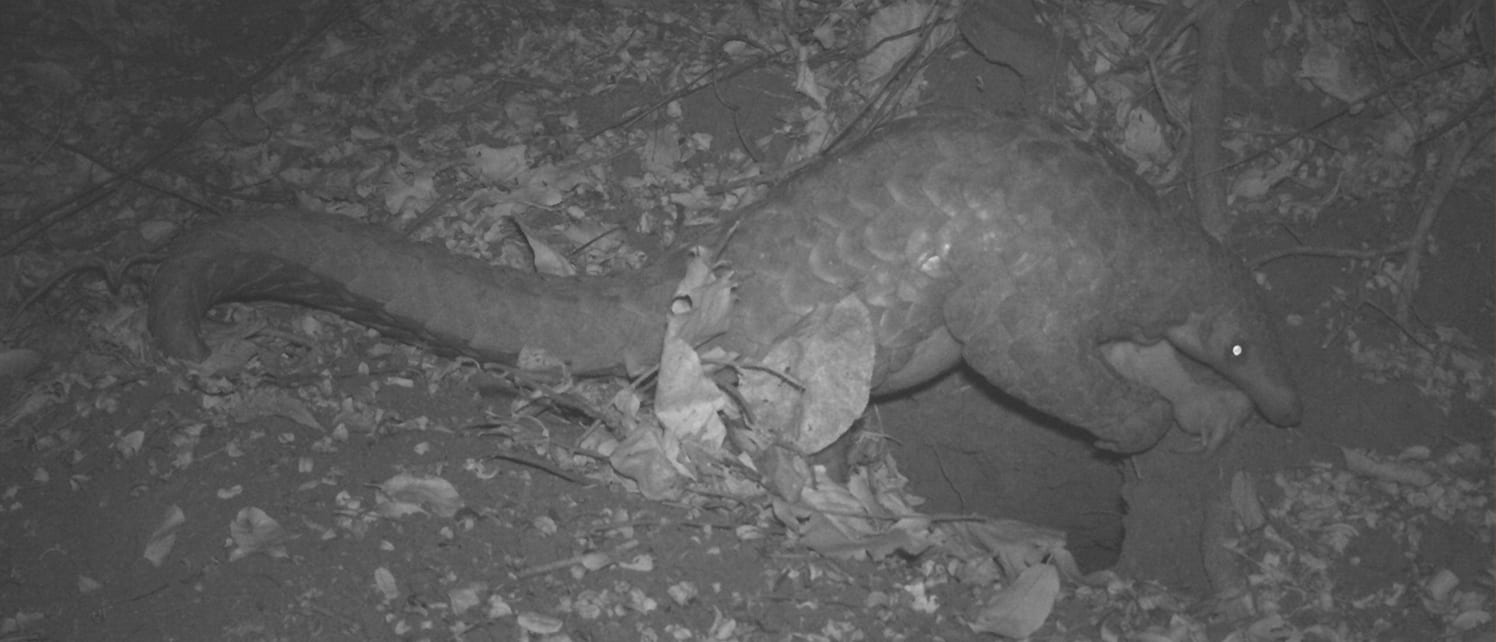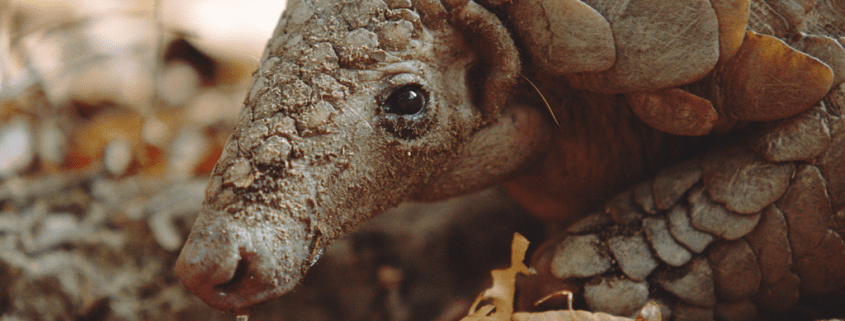Indian Pangolins Spotted in Proposed Reserve
Spotting a pangolin in the wild is only somewhat easier than spotting a wild unicorn. Nocturnal, secretive and in population decline, pangolins seem satisfied to stay unseen. Often, trace evidence (such as scat) are the only way to study their distribution. But this secrecy hasn’t protected the pangolins from rampant poaching.
Not that studying pangolins is impossible. In fact, when confronted with the quandary of a threatened species that eludes study, conservationists often turn to a trusted friend: the camera trap.
Camera traps are disposed to do what we humans could not. They can sit in silence, for weeks and months on end, without moving, so, on the off chance something walks past, they can take a picture.
Applied Environmental Research Foundation (AERF) — one of the few conservation organizations in India’s North Western Ghats mountain range — spent months searching for an Indian Pangolin (Manis crassicaudata) in the proposed Prachitgad Community Reserve. AERF knew pangolin’s lived in the forest from trace evidence. They had also seen pangolins in nearby forests. Yet, no actual pangolins had been seen on the 2,144 acres of land they’re protecting with Rainforest Trust’s support.
Enter: the camera trap.
This past April, the team’s camera traps discovered not one, but two individual pangolins in the proposed reserve. Listed as Endangered by International Union for Conservation of Nature (IUCN), Indian Pangolin populations have declined due to increased poaching for meat and scales used in traditional medicine. With luck, the proposed reserve will be a haven for the threatened species. Besides the Indian Pangolin, the North Western Ghats are home to other threatened species such as the Dhole, Gaur and Sambar Deer. The area also contains iconic species such as Great Hornbills and Leopards.

To protect these important forests for plants, animals and the local communities, AERF is using a unique strategy. Conservation Agreements with local landowners will prevent tree-felling, cattle grazing and hunting. During this process, AERF will train the community on forest monitoring and sustainable use of non-timber resources. In addition, community members will take an active role in forest management. Eventually, AERF intends to have the land officially declared a Community Forest. These safeguards will allow this rich forest to thrive for the species (including the pangolin) that depend on it.





